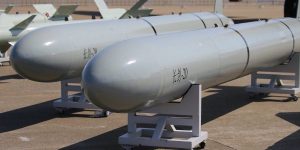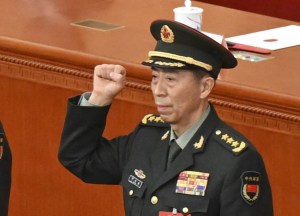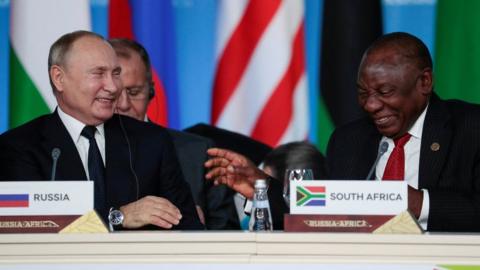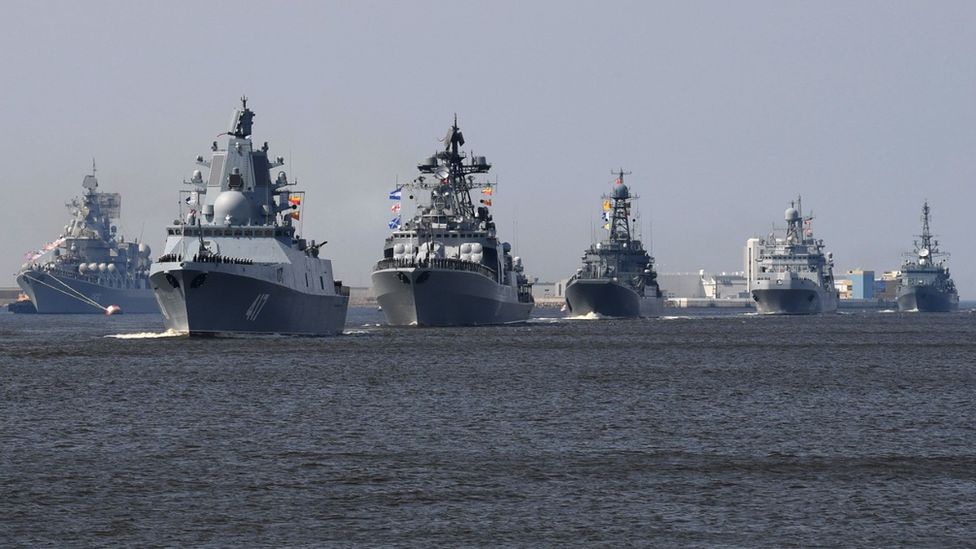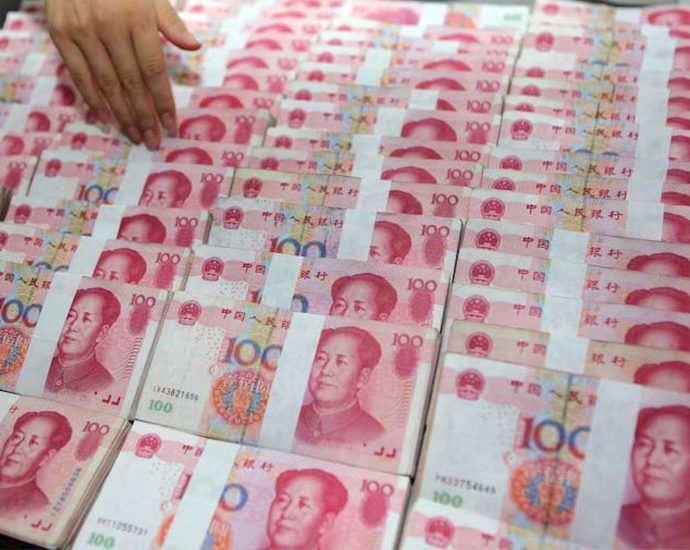Franco Mulakkal: Pope accepts resignation of bishop accused of rape
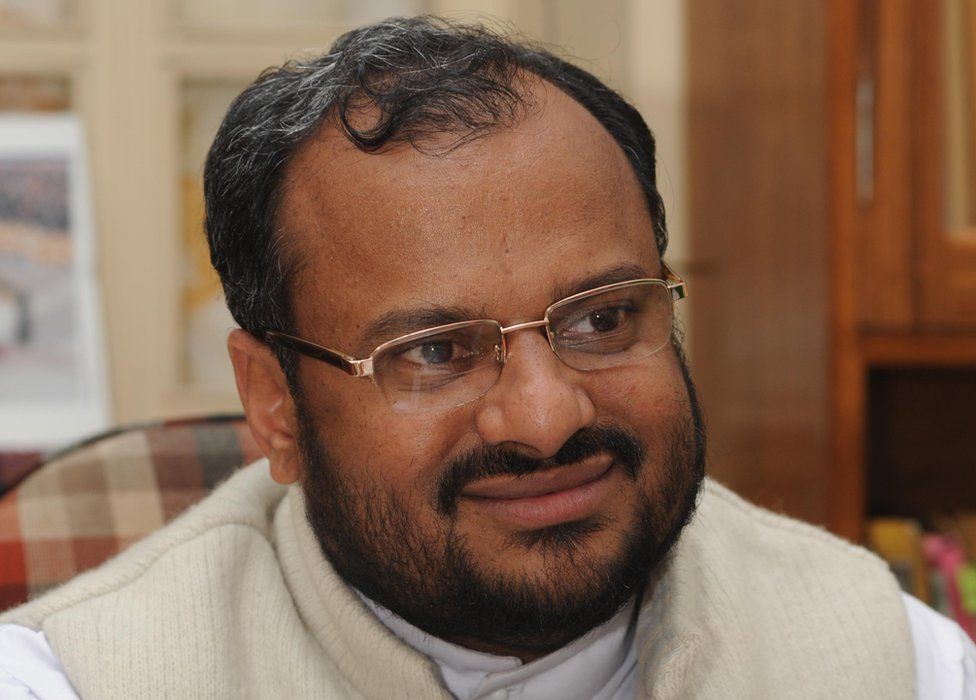
The Vatican has announced that it has accepted the resignation of an Indian bishop accused of raping a nun between 2014 and 2016.
Franco Mulakkal, 54, was the bishop of Jalandhar in the state of Punjab.
Mulakkal, who had denied the allegations, was found not guilty last year by a trial court in Kerala state.
The Vatican’s diplomatic representative in India said that an appeal against Mulakkal’s acquittal had been admitted in the high court in Kerala.
On Thursday, Mulakkal confirmed his resignation and thanked his supporters for standing by him in difficult times.
Given the “still divisive situation”, Mulakkal’s resignation was requested “for the good of the Jalandhar diocese” and to make way for a new bishop, the Vatican’s diplomatic representative said in a statement, The Times of India reported.
It was not a disciplinary action against Mulakkal, he said.
The Joint Christian Council, a federation of Christian organisations, said it welcomed the decision.
The nun who accused Mulakkal of rape belonged to the Missionaries of Jesus, a congregation in Kerala that is part of the Jalandhar diocese.
She had alleged that the bishop raped her 13 times and the assaults happened when he visited the convent where she lived in the city of Kottayam, in Kerala.
She petitioned the Vatican and wrote an open letter to the Pope’s representative in the Indian capital of Delhi in 2018 – which she claimed was her fourth letter to them.
This led to unprecedented protests by nuns and activists who came out in support of the woman.
Several other nuns who protested against the bishop had accused the church in Kerala as well as Vatican officials of turning a blind eye towards the rape allegations.
Mulakkal was arrested in Kerala in 2018. The Vatican had temporarily relieved the bishop of his duties.
In 2022, after he was acquitted by the trial court, the nun’s lawyers had said they would challenge the verdict in the high court.
BBC News India is now on YouTube. Click here to subscribe and watch our documentaries, explainers and features.

Read more India stories from the BBC:

India upgrading BrahMos to close missile gap with China
India plans to develop a new class of air-launched cruise missiles, ostensibly building the air-based leg of a nascent nuclear triad.
This month, Indian Air Chief Marshal Vivek Ram Chaudhari said that the air-launched, upgraded version of the BrahMos supersonic cruise missile and the upcoming BrahMos New Generation (BNG) are set to become the primary deterrent weapons of the Indian Air Force (IAF).
Chaudhari, the IAF’s chief of air staff, noted that combining the BrahMos with the Russian-made Su-30 fighter jet has enhanced India’s firepower and deterrent capabilities, claiming the combination has given India better strike capability and enhanced its firepower.
Chaudhari said that current conflicts had emphasized the importance of long-range precision firepower, making it imperative for India to develop a cheaper, smaller version of the air-launched BrahMos but with the same range and lethality.
China’s rapid military modernization may already have opened a missile gap with India. In particular, India is likely not capable of launching long-range offensive precision strikes on Chinese military bases, command centers and airfields as China has the capability to do to India.
Kartik Bommakanti notes in a 2020 Observer Research Foundation (ORF) paper that air-launched cruise missiles (ALCMs) have enormous advantages in the initial stages of a conflict, as they can eliminate air defenses and airfields. Moreover, Bommakanti mentions that ALCMs can be delivered at substantial standoff ranges, away from air defenses and fighter aircraft ranges.
He notes that China’s subsonic, turbofan-powered CJ-20 ALCM has a 1,500-kilometer range that can be extended to 4,000 kilometers when launched from an H-6K strategic bomber.
With that formidable range, Bommakanti says that the CJ-20 can be launched beyond India’s aerial interception and engagement capabilities. India has no fighters or air defense systems to engage targets at such extreme ranges, he notes.

China’s capabilities present a serious threat to India’s troop concentrations, equipment command and control facilities, airbases, and advanced landing grounds in Ladakh, northern India and across northeastern India.
Adding to India’s comparative disadvantage, China has already developed air-launched hypersonics. Last November, Asia Times reported on China’s new CM-401 air-launched hypersonic missile, which can reportedly travel at speeds of Mach 6 at up to 290 kilometers, launch into a near-space trajectory and maneuver at hypersonic speeds.
An air launch from an H-6K bomber would drastically improve the CM-401’s performance, increasing its range to 3,500 kilometers or more with aerial refueling. India currently has no match for the CJ-20 or CM-401, with its rival Nirbhay cruise missile known to face range and reliability problems.
Missile Threat notes that India’s Nirbhay has a range of 800 to 1,500 kilometers with a 450-kilogram payload and is primarily launched from land-based launchers, though some reports suggest that it can also be deployed on submarines.
Missile Threat notes that the Nirbhay suffered multiple launch failures in 2015, 2016 and 2020. These failures suggest the missile may need a protracted development period before being fielded in substantial numbers.
Although India has taken the initial steps to build a rocket force to deter China, there, too, it faces operational and strategic limitations that constrain its usefulness compared to ALCMs.
Last December, Asia Times reported on the establishment of the Indian Rocket Force (IRF) built around Pralay and Prithvi short-range ballistic missiles (SRBM), Shaurya and Prahaar road-mobile SRBMs and BrahMos supersonic cruise missiles.
However, the Pralay and Prithvi have ranges of just 150 to 500 kilometers and 150 to 350 kilometers, respectively. Moreover, India only has limited numbers of Shaurya and Prahaar road-mobile SRBMs, respectively with ranges of 750 kilometers and 150 kilometers. The high cost of the BrahMos at US$3.2-3.5 million per missile means India can only field them in small numbers.
While India has ballistic missiles such as the Agni-V intercontinental ballistic missile (ICBM) with a 5,000-kilometer range that can hit targets in northern China, using ballistic missiles to attack targets deep in China may result in unintended and unpredictably dangerous escalation.

That is because it is difficult to distinguish between a conventional and nuclear ballistic missile attack. Moreover, most of India’s ballistic missiles are designed to deliver nuclear warheads, increasing the risk of nuclear escalation.
With Chaudhari saying that the BrahMos family of air-launched supersonic cruise missiles will become the IAF’s primary deterrent, India may be developing the air-based leg of a nascent nuclear triad.
India already operates the INS Arihant nuclear ballistic missile submarine (SSBN). In addition, it has a substantial land-based nuclear arsenal, with the introduction of a nuclear-tipped air-launched BrahMos completing India’s nuclear triad.
However, Joy Mitra notes in a September 2020 South Asian Voices article that while the BrahMos is designed to defeat China’s missile defenses, with a range of 800-1,000 kilometers that can be extended by 3,600 kilometers by the Su-30, India faces hurdles in making a nuclear-tipped version.
Mitra says that since BrahMos is a joint India-Russia project, Moscow’s consent is necessary to make a nuclear-armed BrahMos, especially since Russia makes the BrahMos’ seeker and propulsion systems.
Mitra also notes that nuclear-tipped BrahMos missiles present an ambiguity problem because they make it difficult for an adversary to tell whether a BrahMos-armed Su-30 carries a nuclear or conventional missile, which can lead to unintended nuclear escalation.
Developers generated US$1.1 tril through App Store ecosystem in 2022
90% of the billings and sales are without commission to Apple
Entertainment category saw highest growth in goods and services
An independent study by economists from Analysis Group found that the App Store ecosystem facilitated US$1.1 trillion (RM5.072 trillion) in developer billings and sales in 2022.
The economists from Analysis Group estimate that App…Continue Reading
US-China closer and closer to a no-talk sea clash
This week, the United States, Japan and the Philippines kicked off their first-ever joint coast guard drills in Manila Bay amid rising tensions in the South China Sea.
The exercises, featuring four Philippine Coast Guard (PCG) vessels along with a US Coast Guard cutter and a Japanese Coast Guard cruiser, are aimed at enhancing interoperability, search and rescue, and law enforcement capacity of the three allied nations, especially as the PCG confronts rising Chinese maritime intrusions.
The unprecedented coast drills are part of broader efforts by the US and its regional allies to check China’s rising maritime ambitions. Earlier this year, the Philippines, US, Australia and Japan conducted massive wargames in the Philippines. Following on, later this year naval forces from the Philippines, US and Australia are expected to conduct joint patrols in the contested South China Sea aimed at China.
The coast guard drills came just a day after the US Indo-Pacific command released footage that showed an “unnecessarily aggressive maneuver” by a Chinese J-16 fighter against US RC-135 Rivet Joint reconnaissance aircraft on May 26.
The Pentagon maintained that it was simply conducting “safe and routine operations” over the South China Sea but Beijing countered by accusing the US aircraft of posing a “serious danger” by “deliberately intrud[ing]” into China’s training exercises in the contested area.
Rising tensions in the maritime region have shadowed this year’s Shangri-La Dialogue in Singapore, where senior American and Chinese officials are expected to present their respective regional security architecture visions before the international community.
In a telltale sign of intensifying rivalry, Chinese Defense Minister Li Shangfu, who has been sanctioned by the US for alleged involvement in high-tech defense deals with Moscow, has reportedly turned down a proposed meeting with US Secretary of Defense Lloyd Austin on the sidelines of the high-profile defense confab.

Notwithstanding China’s deployment of a new envoy to Washington, Xie Feng, there is little indication of any diplomatic breakthrough. An emerging New Cold War could quickly turn into a hot water one absent a concerted effort by both superpowers to keep their rivalry on an even keel.
Fears of actual skirmishes were brought into sharp focus following yet another close encounter between the US and Chinese armed forces in the South China Sea.
Back in 2018, a Chinese warship maneuvered as close as 45 yards from the US Navy destroyer USS Decatur, risking direct confrontation. This time, a Chinese fighter partially intercepted a US reconnaissance aircraft by cutting directly cutting in front of the latter’s nose.
The aggressive maneuver created sufficient turbulence to rock the RC-135, underscoring how close the two superpowers have again come to blows over the disputed waters.
“The United States will continue to fly, sail, and operate – safely and responsibly – wherever international law allows, and the US Indo-Pacific Joint Force will continue to fly in international airspace with due regard for the safety of all vessels and aircraft under international law,” the US Indo-Pacific Command (INDOPACOM) said in a statement, insisting on the legality of its operation in the area.
During a briefing in Beijing, Chinese Foreign Ministry spokesperson Mao Ning countered the US claims by instead accusing the Pentagon of inviting crisis through the regular deployment of spy planes into China’s claimed territories.
“The US’s provocative and dangerous moves are the root cause of maritime security issues. China urges the US to stop such dangerous provocations,” the Chinese foreign ministry spokesperson said.
The incident echoed the 2001 full collision between an American reconnaissance plane and Chinese fighter jet over the Hainan Island in the South China Sea, which led to one casualty and a full-blown diplomatic crisis.
In contrast to bilateral relations two decades earlier, when then-Chinese president Hu Jintao welcomed institutionalized bilateral dialogue with Washington, the two superpowers are currently locked in a brewing New Cold War with trade and tech war components.
A whole host of bilateral strategic dialogues were suspended following diplomatic tensions in the wake of former US House Speaker Nancy Pelosi’s trip to the self-governing island of Taiwan last August. A highly-promising summit between US President Joe Biden and Chinese paramount leader Xi Jinping last November raised hopes of a thaw between the two sides.
But the Biden administration’s decision to shoot down a Chinese spy balloon flying over sensitive facilities in mainland America deflated earlier hopes of restoring frayed communication channels.

This week, China reportedly rebuffed efforts to arrange a meeting between Defense Secretary Austin to meet with his Chinese counterpart Li at the Shangri-La Dialogue Security Forum in Singapore this week.
“Frankly, it’s just the latest in a litany of excuses. Since 2021, the PRC has declined or failed to respond to over a dozen requests from the Department of Defense for key leader engagements, multiple requests for standing dialogues and nearly ten working-level engagements,” a Pentagon official told the press on the condition of anonymity.
But China’s Defense Ministry has insisted that Beijing “attaches importance” to maintaining stable ties with Washington and that there had been “no interruption” in communication channels while blaming Washington for the dearth of institutionalized dialogue.
“Responsibility for the current difficulties faced by the two militaries in their exchanges lies entirely with the US side,” maintained China’s defense spokesperson Tan Kefei.
“The US claims that it wants to strengthen communication, but in reality it disregards China’s concerns and creates artificial obstacles, seriously undermining mutual trust between the two militaries,” he added, referring to a host of new US sanctions imposed on Chinese tech companies and senior officials, including defense minister Li.
Beijing has reportedly demanded the lifting of “illegal unilateral sanctions” , including on its top officials, as a precondition for the resumption of high-level dialogue. But the Biden administration has insisted on unconditional dialogue in the interest of both superpowers and international security.
The interregnum in high-level military dialogue between the world’s reigning superpowers is ringing high-pitched alarm bells, since even at the height of the Cold War the US and the Soviet Union maintained robust communication channels.
Alarmed by the rising tensions, the US Secretary of State Antony Blinken, who was on a trip to new North Atlantic Treaty Organization (NATO) member Sweden this week, warned that the latest incident in the South China Sea underscores the need for “regular, open lines of communication” especially “between our defense ministers.”
“The most dangerous thing is not to communicate and as a result, to have a misunderstanding, a miscommunication,” Blinken added.
Follow Richard Javad Heydarian on Twitter at Richeydarian
Brics ministers call for rebalancing of global order away from West
 EPA
EPAA meeting of foreign ministers of the Brics group of nations in South Africa has called for a rebalancing of the global order away from Western nations.
South African Foreign Minister Naledi Pandor said the group’s vision was to provide global leadership in a world fractured by geopolitical tension, inequality and global insecurity.
Brics is an acronym for Brazil, Russia, India, China and South Africa.
Allegations of Russian war crimes in Ukraine have clouded the talks.
The International Criminal Court (ICC) has issued an arrest warrant for Russian President Vladimir Putin over the allegations and, as a member of the court, South Africa would be obliged to arrest him if he attends a Brics summit scheduled for Johannesburg in August.
The Brics is seen by some as an alternative to the G7 group of developed nations, which held its annual summit in the Japanese city of Hiroshima last month, and was also attended by the leaders of Brazil and India. G7 members have been highly critical of Russia and China.
On the first of two days of talks in Cape Town, Indian Minister of External Affairs Subrahmanyam Jaishankar said the gathering must “send out a strong message that the world is multipolar, that it is rebalancing and that old ways cannot address new situations”.
“At the heart of the problems we face is economic concentration that leaves too many nations at the mercy of too few,” he said.
Brazilian Foreign Minister Mauro Vieira described the Brics as an “indispensable mechanism for building a multipolar world order that reflects the devices and needs of developing countries”.
Chinese Vice Foreign Minister Ma Zhaoxu said the Brics group could be expanded to provide assistance to developing countries and emerging market economies.
Russian Foreign Minister Sergei Lavrov said “more than a dozen” countries including Saudi Arabia had expressed interest in joining the group.
His presence at the event was met with protests, with demonstrators holding a picture of Mr Lavrov with the words “child murderer”.
One protester told AFP news agency it was difficult to see South African officials “shaking the hand of a person who is part of these systemic war crimes against Ukrainian children”, a reference to the ICC case against Mr Putin.
South Africa’s governing African National Congress (ANC) has long-standing ties with Russia that go back to the years of white-minority rule before 1994, and the country has refused to criticise Moscow’s invasion of Ukraine.

Earlier this week, a deputy minister told the BBC the country planned to change its laws so that it had the power to decide whether or not to arrest a leader wanted by the ICC.
At a news conference, Dr Pandor was asked by BBC correspondent Andrew Harding whether Mr Putin would be arrested if he came to the summit in August.
“The president [Cyril Ramaphosa] will indicate what the final position in South Africa is,” she replied.
A senior official privately described the situation as a diplomatic nightmare from which the South African government was desperate to escape, and one option said to be under consideration is moving the summit to another country.
Related Topics
Ukraine war gives Chinaâs yuan a needed boost
The Chinese economy’s sheer size and rapid growth are impressive.
China maintained one of the highest economic growth rates in the world for more than a quarter of a century, helping lift over 800 million people out of poverty in just a few decades.
The country is the largest exporter in the world and the most important trading partner of Japan, Germany, Brazil and many other countries. It has the second-largest economy, after the United States, based on the market exchange rate – and the largest of all based on purchasing power.
And yet the yuan still lags as a major global currency. The war in Ukraine, which started in February 2022, may change that.
As a professor of finance and expert on international finance, I understand how this geopolitical conflict may put China’s currency on the next phase of its path to becoming a global currency – and prompt the onset of the decline of the US dollar from its current dominance.
Chinese yuan’s slow progress
China has long wanted to make the yuan a global force and has mounted significant efforts to do so in recent years.
For example, the Chinese government launched the Cross-Border Interbank Payments System, or CIPS, in 2015 to facilitate cross-border payments in yuan. Three years later, in 2018, it launched the world’s first yuan-denominated crude oil futures contracts to allow exporters to sell oil in yuan.
China has also emerged perhaps as the world’s largest creditor, with the government and state-controlled enterprises extending loans to dozens of developing countries. And China is developing a digital yuan as one of the world’s first central bank digital currencies. The trading hours for the yuan were recently extended on the mainland.
Thanks to these efforts, the yuan is now the fifth-most-traded currency in the world. That is a phenomenal rise from its 35th place in 2001. The yuan is also the fifth-most-actively used currency for global payments as of April 2023, up from 30th place in early 2011.

Rankings can be misleading, though. The yuan’s average trading volume is still less than a 10th of the US dollar’s. Moreover, almost all trading was against the US dollar, with little trading against other currencies.
And when it comes to global payments, the actual share of the yuan is a mere 2.3%, compared with 42.7% for the dollar and 31.7% for the euro. The yuan also constituted less than 3% of the world foreign exchange reserves at the end of 2022, compared with 58% for the dollar and 20% for the euro.
US dollar’s dominance questioned
The US dollar has reigned supreme as the dominant global currency for decades – and concern about how that benefits the US and potentially hurts emerging markets is not new.
The value of the US dollar appreciated significantly against most other currencies in 2022 as the Federal Reserve hiked interest rates. This had negative consequences for residents of almost any country that borrows in dollars, pays for imports in dollars, or buys wheat, oil or other commodities priced in dollars, as these transactions became more expensive.
After Russia invaded Ukraine in early 2022, the US and its Western allies put sanctions on Russia, including cutting Russia’s access to the global dollar-based payments system known as the Society for Worldwide Interbank Financial Telecommunication, or SWIFT. That clearly displayed how the dollar can be weaponized.
With Russia largely cut off from international financial markets, it stepped up its trade with China. Russia began receiving payments for coal and gas in yuan, and Moscow increased the yuan holdings in its foreign currency reserves. Russian companies like Rosneft issued bonds denominated in yuan. According to Bloomberg, the yuan is now the most-traded currency in Russia.
Other countries took notice of Russia’s increasing use of the yuan and saw an opportunity to decrease their own dependency on the dollar.
Bangladesh is now paying Russia in yuan for the construction of a nuclear power station. France is accepting payment in yuan for liquefied natural gas bought from China’s state-owned oil company.
A Brazilian bank controlled by a Chinese state bank is becoming the first Latin American bank to participate directly in China’s payments system, CIPS. Iraq wants to pay for imports from China in yuan, and even Tesco, the British retailer, wants to pay for its Chinese imported goods in yuan.
The combined dollar amount of these transactions is still relatively small, but the shift to yuan is significant.
Yuan still not freely available
China keeps a tight grip on money coming in and out of the country. Such capital controls and limited transparency in Chinese financial markets mean China still lacks the deep and free financial markets that are required to make the yuan a major global currency.
For the yuan to achieve a truly global standing, it needs to be freely available for cross-border investment and not just serve as a payment medium to accommodate trade.
But the war in Ukraine may have just made it feasible for the yuan to eventually join the ranks of the dollar and the euro – even if the volume isn’t there yet.
And any US policy decisions that weaken the reputation and strength of US institutions – such as the recent drama over raising the debt ceiling, which brought the government to the brink of default – will accelerate the rise of the yuan and decline of the dollar.
Tuugi Chuluun is an associate professor of finance at Loyola University Maryland.
This article is republished from The Conversation under a Creative Commons license. Read the original article.
Paywatch and KB Bukopin Partner to Launch Bank-Backed EWA Service
The service is has more than 200,000 users globally
It is the only backed and regulator-approved EWA in Asia
Paywatch partnered with Bank KB Bukopin to launch Asia’s first bank-backed EWA service in Indonesia. Paywatch is an Earned Wage Access (EWA) provider. The launch of this service follows the signing of an MoU…Continue Reading
15 furniture stores in Singapore with the best vintage and modern selections

Need a clever space-saving solution? The Distrikt Bed has your back, or rather, your side tables. And for those living in studio apartments, fear not – the bed also comes in a sofa version, saving you from the clunky presence of coffee tables.
315 Outram Rd, #03-02 Tan Boon Liat Building, Singapore 169074
2. Grey and Sanders
Nothing in nature is perfect, and Grey and Sanders lets you bring that notion into the quintessential mid-century modern home. Live edges of wood slabs are proudly displayed, alongside freckled leather that age well like patina. Here, flaws are not merely tolerated but celebrated.
Move Forward speaker pick named mid-month

The Move Forward Party (MFP) is expected to finalise its candidate for the House Speaker post in the middle of this month, said party secretary-general Chaithawat Tulathon.
He said the party has not decided who it will nominate, but the matter should be settled in this month when the Election Commission is expected to start endorsing poll winners.
Mr Chaithawat said the MFP and Pheu Thai, who are locking horns over the post, will solve the dispute within two weeks.
Pheu Thai leader Cholnan Srikaew said his party would not discuss who it will nominate for the House Speaker post until it reaches an agreement with the MFP.
“It was agreed at the recent meeting that the issue would not affect the coalition formation. This means if we have an agreement, the coalition formation will proceed without any conflict,” Mr Cholnan said.
“We don’t want any conditions. We don’t want the issue to be settled in a free vote.”
Khunying Sudarat Keyuraphan, leader of the Thai Sang Thai Party, on Thursday called on the MFP and Pheu Thai to sort out the issue instead of allowing a free vote over the selection of the House Speaker.
“A free vote will cause problems in the formation of the government. They should finalise it,” she said.
Meanwhile, acting Democrat leader Jurin Laksanawisit said on Thursday it is an incorrect understanding that the House Speaker’s role is to drive a political party’s agenda.
Mr Jurin said the House Speaker must maintain neutrality during parliament meetings.
He added that the House Speaker’s conduct is clearly governed by the constitution and parliamentary meeting rules.
Catcha Digital Berhad Appoints Shireen Chia Yin Ting as Independent Non-Executive Director
Chia is currently the CFO of MyAirline
She was previously with Air Asia for 11 years
Catcha Digital Berhad announced today that it appointed Shireen Chia Yin Ting (PIC) as its new Independent Non-Executive Director (INED), effective 31 May 2023.
Chia is currently the Chief Financial Officer of MYAirline, a new startup airline in…Continue Reading

